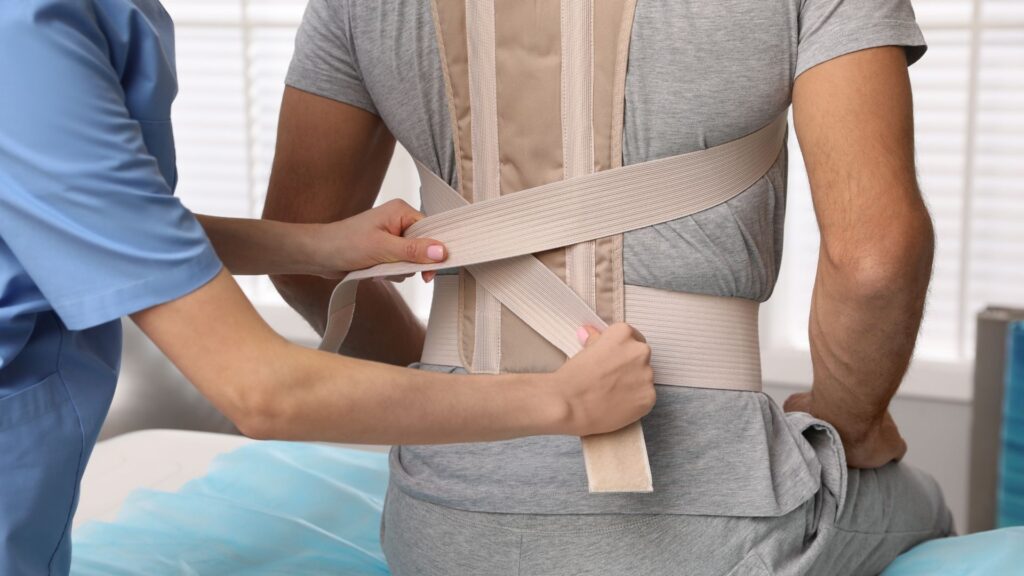
Decompressed Spine Will Ease Your Pain
When you suffer persistent back pain and other accompanying symptoms, you understand how disruptive your life can be. You may be unable to think about anything other than seeking relief. Some people seek comfort from spinal decompression therapy, which can be surgical or nonsurgical, and you may find relief with spinal decompression. Alternative therapy and surgery are included in this category of treatments.
If you are looking for relief from back discomfort, Sirwiss-affiliated chiropractors can help. Here’s what you need to know to help decide whether spinal decompression is suitable for you.
What is Spinal Decompression?

Spinal decompression therapy relieves pressure along the spine and alleviates associated pain and discomfort. The term “spinal decompression” refers to a group of nonsurgical and surgical therapies used to reduce pressure on the spine’s neural components.
The spinal column is made up of a series of bones (vertebrae) strung together like beads on a string and connected by ligaments and spinal (intervertebral) discs. A nerve pathway runs through these connective tissues, which are also known as the neural component of the spine.
A multitude of injuries can compromise the integrity of the connective tissues that run along the spine. In some situations, this might place pressure on the nerve route, causing discomfort. Spinal decompression therapy can help reduce pain while also addressing the underlying source of discomfort.
Some of the conditions spinal decompression may help with include:
- Bulging Discs
- Degenerative Discs
- Pinched Nerves
- Sciatica
- Spinal Stenosis
What Is Nonsurgical Spinal Decompression?

Nonsurgical spinal decompression refers to methods that are designed to reduce pressure and pain without requiring surgery or anesthesia.
Some of these nonsurgical options can be done from home, including:
- OTC pain relievers such as acetaminophen (Tylenol), aspirin (Bayer), ibuprofen (Advil), and naproxen (Aleve) can help you manage your discomfort.
- Prescription pain relievers: Depending on the degree of your pain, a doctor may prescribe anti-inflammatory drugs, muscle relaxants, or opioids to help you manage it during a flare-up.
- Heat therapy: Heat therapy, which is most typically used for muscle tension and tightness, can take the shape of a heating pad or wrap, a warm gel pack, or a hot bath. Heat treatment also includes the use of fire cups, saunas, and hot tubs.
- Cold therapy: Topical ice packs are expected to reduce site-specific inflammation and edema, whereas ice baths are thought to reduce general inflammation.
- Nerve stimulation: This technique, also known as transcutaneous electrical nerve stimulation, involves utilizing a machine to apply small electrical charges to the location of pain in order to bring relief. At-home OTC machines are available.
Other nonsurgical spinal decompression treatments necessitate the services of a physical therapist, acupuncturist, chiropractor, or masseuse.

- Acupuncture: Acupuncture is a method of Chinese medicine that involves inserting small needles into the body in order to release natural pain-relieving substances. The needles for spinal decompression will be positioned at the hot regions that the acupuncturist believes would bring the most relief.
- Chiropractic care: A chiropractor can use chiropractic adjustment (spinal manipulation) to help realign bones and help relieve pain.
- Physical therapy: In some cases, strengthening or mobilizing certain muscle groups can help rehabilitate the area that’s causing trouble.
- Traction: Typically performed by a chiropractor, traction is a methodology that involves using a specific table outfitted with pulleys and weights to stretch your spine. This is sometimes also done on an inversion table.
Is Non-surgical Spinal Decompression Right for You?
Some people may not be candidates for or able to afford nonsurgical spinal decompression therapy. Patients who have had spinal fusion, artificial discs, or other implants placed in their spines, or who have had prior back surgery that did not go well are not suitable candidates for nonsurgical spinal decompression. If you use blood thinners for another health issue, have had many surgeries without relief, or have anything that could potentially weaken your spine, you may not be a suitable candidate for nonsurgical treatment.
This includes:
- Ankylosing Spondylitis
- Osteoporosis
- Osteopenia
- Spondylolisthesis
- Spinal Stenosis
- Spinal Infection
- Spinal Tumor
What Is Surgical Spinal Decompression?
True to its name, spinal decompression surgery refers to a broad group of surgical spinal pain and pressure treatments. All spinal decompression procedures do one of three things, which are as follows:
- Shaving Down Bone to Make More Room for the Nerve
- Scooping Out Part of a Disc That’s Pushing on a Nerve
- Removing A Whole Disc and Using Hardware to Fuse One Vertebra to Another
More specifically, the most common spinal decompression surgeries include:
- Discectomy: Also known as endoscopic percutaneous disc removal, this procedure involves removing a portion of one of the spinal discs to relieve pressure.
- Laminotomy: This procedure involves removing a portion of the bone that forms the vertebral arch in the spine (lamina) and any bony growths along the spine (osteophytes) to increase the girth of the spinal canal.
- Laminectomy: This procedure is similar to a laminotomy, but the entire lamina is removed.
- Foraminotomy: This procedure involves removing connective tissue and bone around the opening of a nerve root in your spinal column to create more room.
- Corpectomy: This procedure involves removing some part of the vertebrae, along with the discs between the vertebrae, if needed.
- Spinal fusion: This procedure involves permanently connecting two or more vertebrae together with a bone graft.
Is Surgical Spinal Decompression Safe?

There is always a chance of something going wrong during surgery. Spinal decompression procedures are commonplace and often involve only a small incision, therefore the danger involved is negligible.
When surgical spinal decompression risks do occur, they can include:
- Too Much Blood Loss
- Blood Clots
- Nerve Damage
- Infection
- Stroke
- Damage to the Spinal Structure
Is surgical Spinal Decompression Right for You?
It’s possible. Surgical spinal decompression is an option for patients with conditions like sciatica, bulging discs, and chronic back and neck discomfort. Those who have shattered bones in their spine, spinal stenosis, a herniated disc, metastatic spinal cord compression, or a slipped disc may also be candidates. Talk it over with your medical practitioner. It’s recommended that you seek help so that your symptoms don’t worsen and you can find some relief.
Alternatives to Nonsurgical and Surgical Spinal Decompression

Sometimes spinal pressure and discomfort will resolve on their own without the need for nonsurgical or surgical intervention. In other words, time is one option. According to research, the majority of spinal compression instances will resolve on their own with time and altered activities. Consult a chiropractor or other healthcare practitioner for more advice on which activities you should modify. Finding the correct treatment for your specific situation is the key to resolving pain caused by spinal compression.
Back pain can be resolved with proper treatment. Using a phased approach allows your healthcare professional to locate the greatest option for your case with the least amount of risk. You can return to work, school, or play after treatment.